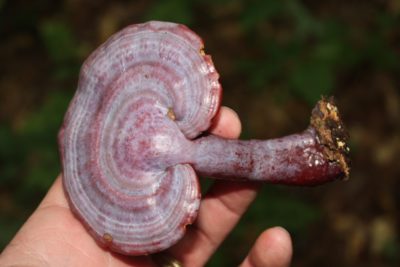April 16th is Day of the Mushroom! To celebrate, we are sharing our favorite fungi reading materials.
In Search of Mycotopia
This entertaining and mind-expanding book will captivate readers who are curious about the hidden worlds and networks that make up our planet. Bierend uncovers a vanguard of mycologists: growers, independent researchers, ecologists, entrepreneurs, and amateur enthusiasts exploring and advocating for fungi’s capacity to improve and heal. From decontaminating landscapes and waterways to achieving food security, In Search of Mycotopia demonstrates how humans can work with mushrooms to better live with nature – and with one another.
Want more? Be sure to listen to this Tractor Time Podcast episode featuring an exclusive interview with the author!
Check out In Search of Mycotopia here!
Appreciating Wild Mushrooms

Hunting and eating edible wild mushrooms is an extremely popular culture in some countries, but most people in the United States associate them with stomach issues, trips to the hospital and even death. Clearly, there is a need for education on the subject, and with that education, a new world of potential food delicacies will be opened. Example after example in life tells us that knowledge is power, and certainly, knowledge of edible wild mushrooms is no exception.
Read the full EcoFarmingDaily article here!
Mycelium Running
Growing more mushrooms might be the best thing we can do to save the environment. With more mushrooms there will quickly be less pollution. Written by a mushroom expert who discovered that enzymes and acids in the fine mycelium filaments that cover vast areas of land can actually break down many pollutants, plant and animal debris as well as recycle carbon, nitrogen and other essential elements back into the soil. In addition to a manual for healing the earth, Mycelium Running, offers instruction on the art of mushroom cultivation and tips for choosing fungi for various purposes.
Check out Mycelium Running here!
A Guide to Edible Mycorrhizal Mushrooms

Identifying trees is part of the skill set needed to know where to best look for these mushrooms. Some mycorrhizal fungi form partnerships specifically with manzanitas and madrones, for instance, along the Redwood Coast. Other species are found only with alders, or with certain pines, or with beech. On the other hand, the same tree can have numerous mycorrhizal affiliations and thus offer prospects for different fungi at different points in the year.
Read this EcoFarmingDaily article here!
Organic Mushroom Farming and Mycoremediation
More than a cultivation guide, Organic Mushroom Farming and Mycoremediation is about healing the people and the planet, one mushroom and one cultivator at a time, reversing destructive cycles into creative forces. Cotter urges readers to think with an opportunistic yet minimalistic approach, much like a mushroom, taking what it needs to survive and then returning resources to its ecosystem.
Want more? Be sure to read this exclusive interview with the author!
Check out Organic Mushroom Farming and Mycoremediation here!

